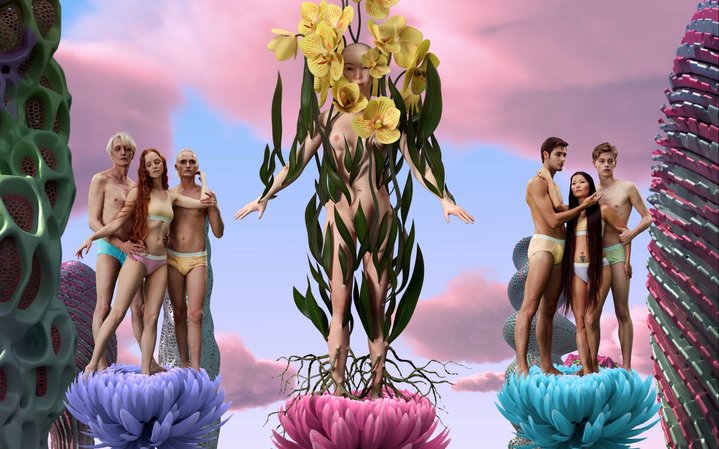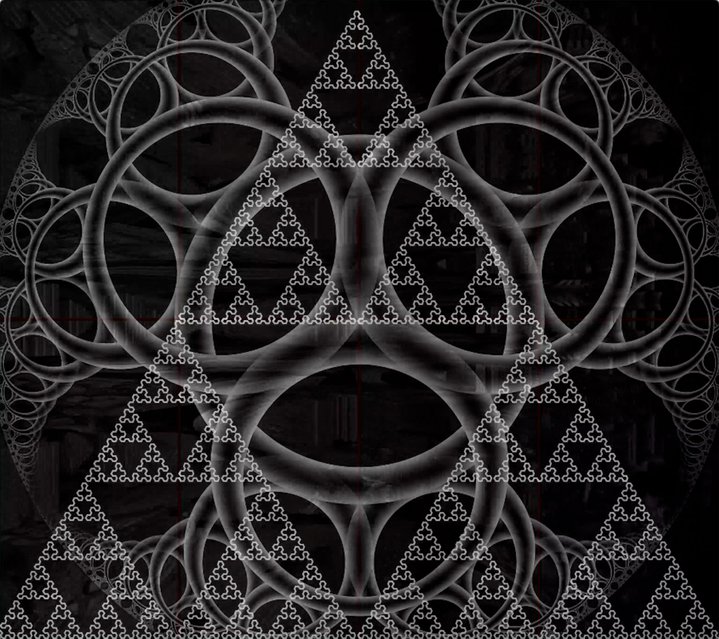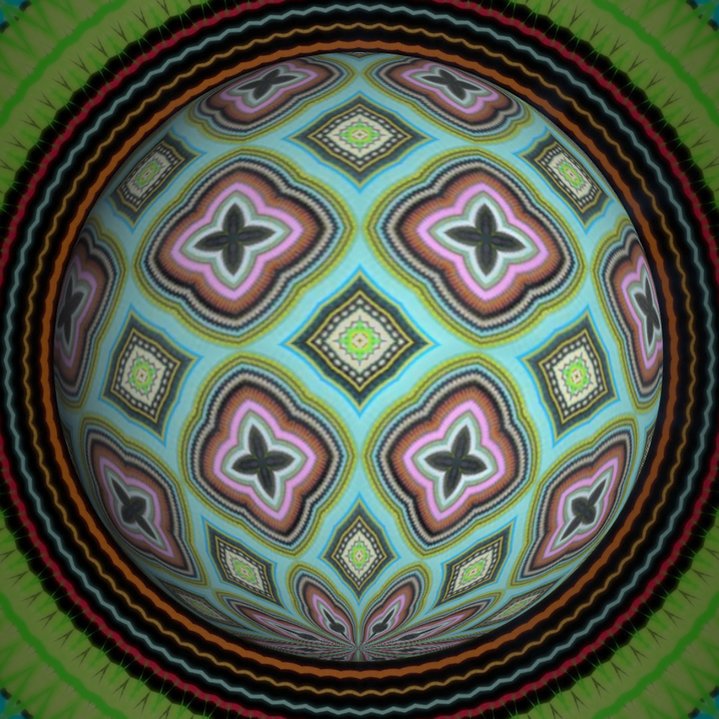Eve Sussman. 89 seconds Atomized. Photo Snark.art
Russian cyber entrepreneurs drive the global NFT market
Who are they, these crypto-art pioneers and founders of online NFT digital art platforms?
Last month, the State Hermitage Museum minted and sold NFTs made from masterpieces in its collection, an event which would have seemed inconceivable until now. For although NFT (non-fungible token) digital art was first discussed four years ago (in 2017, when design studio Larva Labs created a collection of 10,000 digital avatars called ‘CryptoPunks’), the real boom in digital art has happened this year. First, renowned cyber artists, followed by more established contemporary artists (now some are even referring to them as “traditional” artists) have flocked to NFT marketplaces in the hope of cashing in on the NFT boom. According to a recent report by ConsenSys, NFT already accounts for 10% of global art marketplace sales. The surge in demand for tokenized art in the last year has been a direct result of the pandemic, the cancellation of major fairs and a global rethinking of the younger generation's attitudes towards logic and ways of collecting. After all, digital art does not need to be stored in special vaults, transported, insured and restored; it can be bought and sold in a couple of minutes, from your phone.
The first results of this “crypto spring” were discussed in early June at the St. Petersburg International Economic Forum and at the end of the month, June 23-25, in Nizhny Novgorod at the ‘Digital Industry of Industrial Russia’ (DIIR) conference, our country's first international exhibition of digital art and technologies Disartive, founded by Olga Dvoretskaya. So, in Russia, the possibilities of the blockchain for art are being actively explored and applied. In addition, it turns out that many marketplaces which trade art in the form of non-fungible tokens are founded by entrepreneurs (and sometimes artists) of Russian origin. Some of them shared their vision of the situation and talked of their own perspectives about the field during a public discussion entitled: ‘Drops instead of exhibitions: from tension to acceptance. How the traditional contemporary art market is adapting to NFT’. It was held at the St. Petersburg Radio House on June 5 (during the St. Peterburg Economical Forum) as part of the ‘Summer Show’ program of talks and organized by Russian Art Focus with the support of the blockchain platform ‘The Art Exchange’.
‘The Art Exchange’, an art tokenization company, has launched its own marketplace, where artworks of contemporary Russian and international artists can be purchased, created specifically for sale as NFT. Inna Bazhenova and Andrei Belyakov, the founders of the platform, call the main goal of the platform is the popularization of digital art among the masses. As Inna Bazhenova explains, “The Art Exchange platform was conceived and implemented by us as a tool to democratize the art market -- a point at which the elite and the public intersect. We deal with traditional art and present fundamental values - offering a wide audience the opportunity to buy masterpieces of world art through tokenization, in the form of collective ownership. And the NFT project is logically connected to our core business. The Art Exchange has long had a technological base in place that corresponds to NFT. The tools have to work, we can’t neglect such an excellent experimental platform.
If we talk about the phenomenon of record sales of NFT art, you have to understand that the price of these works depends directly on how highly they are valued by a certain community. How big that community is, how high quality it is. I think it’s analogous to the social contract in contemporary art, where any object, installation or performance, even the most provocative, is recognized as art if there’s a community of people who understand, accept and recognize its value. This is the paradox: contemporary art fights against sell-out, trying to separate art from consumption, but, at the same time, it is selling out, in effect, art without art.”
New drops on ‘The Art Exchange’ will appear weekly throughout the summer. Any work can be purchased directly with a bank card for euros or via a DAI stablecoin linked to the US dollar. Unique and circulating NFTs will be displayed on the platform. The Art Exchange’s main difference in producing and selling NFTs is a strict curatorial selection process. For Andrey Belyakov, cofounder of ‘The Art Exchange’, the functionality of NFT art is of paramount importance: “Cryptocurrency is one millionth of blockchain's potential, but the boom in the cryptocurrency market is drawing interest in NFT. And NFT is, first and foremost, about functionality: access, ownership, mutability. Behind this is the enormous potential of blockchain and the potential for popularization, mass adaptation of the technology for collectors.” He speaks of the importance of bringing together classical art markets, technology and financial instruments: “Right now, the art market lacks hedging tools, risk sharing, insurance, whereas blockchain will allow all this to be applied to artworks, to make the art market more efficient.”
‘RARIBLE’ is one of the world’s largest marketplaces (whose trading volumes have already surpassed better known platforms) where NFT artworks are auctioned. It is the brainchild of young crypto-industry enthusiasts based in Russia, Alexander Salnikov and Alexey Falin. They launched their ambitious project in 2019 as a platform where any user, not necessarily an advanced programmer, could create and sell their own token. Already in 2020, the startup began to make a profit, earning on commissions from users’ transactions and this year the platform has become almost the most popular among celebrities, who put their drops here: music, gifs and videos. It runs on the Ethereum blockchain. Salnikov is sanguine about the ups and downs of this market having been in the field for a decade: “As old-timers of the cryptocurrency market, who have been watching the situation since around 2012, we are familiar with its fluctuations. The global crypto-art wave picked up earlier this year, with sales peaking in March. At the beginning of June, we could see a downturn, but this is more of a scare for newcomers. We understand that investors have now entered the field, which means that new start-ups will emerge and another upturn can be expected in the autumn or early next year.” He noted that many of the original artists creating works on the blockchain when it was technically challenging to do this later lost interest, as NFT became mainstream and celebrities, influencers and bloggers piled in.
‘Snark.art’ project is based in the US, but also has Russian roots. In 2017, Misha Libman and Andy Alekhin founded a technological laboratory exploring the creative possibilities of blockchain and other new technologies. In 2020, ‘Snark.art’ also launched a platform for selling NFT art. The lab works with international artists already recognized in the art community (including ‘AES + F’ and ‘Recycle Group’) and adapts them to the possibilities of NFT. The company’s slogan is: “New art forms start here!” ‘Snark.art’ develops projects in the fields of art, performance, music and literature. The result is interactive projects that go beyond conventional videos or digital images. Alekhin has spoken about the relationship between the traditional art world and crypto art, how it now wants to climb onboard after long rejecting crypto art and, in some ways, forcing the cryptoartists to create their own infrastructure: “Beeple himself, who became the flagship for crypto-art, had been rejected by the art community for decades. The idea behind ‘Snark.art’ is precisely to do everything ourselves; we take the opportunity to program NFT. It’s a full cycle, from concept to sale. I think artists are just getting to grips with the power of NFT to create works that change, disappear or interact with others, for example. In this situation, sales also become part of the game and the most interesting thing begins just after the sale. We have to admit that the commercialization of art has happened and it has only benefited the art world. Projects that previously could not be monetized can now be.”
‘Disartive’ is Russia's first digital art design fair, which was held in Moscow in autumn 2020. Its founders, Olga Dvoretskaya, a digital producer, and Evgeny Dobrovolsky, founder of the augmented reality platform Arround.world, see their mission as exploring and discovering new forms, names, directions, and patterns of interaction between the participants in the process: digital artists, players in the traditional art market, crypto-investors and collectors. The second edition of the fair was held in Nizhny Novgorod in June 2021. The main objective of the fair is to explore new opportunities and shape the market. All the digital works presented at the fair were available for purchase. Dvoretskaya sees the need for far more engagement and education in this field: “We have yet to adapt to the opportunities and realities of the new world. Attitudes towards the form of personal data transfer, the transfer of values, are changing. New possibilities for value transfer are NFT. The acquisition of crypto-art is the access to a huge amount of communications in a global world. And in this situation, the temporary decline should not be frightening, because in a couple of years this market will grow tenfold. Traditional collectors are in for a culture shock, they lack basic knowledge. It’s more difficult for a collector to overcome this barrier of misunderstanding and mistrust because they are spending their money, but it’s easier for artists because they are making money. But it’s harder for artists to learn, to master new technologies in order to create NFT. Our mission is to adapt people to the new economic formation. The more digital art exhibitions there are, the faster it will enter our lives.”
The article was first published in the 93rd issue of The Art Newspaper Russia.













